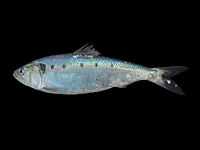Gene transcriptions/Boxes/CAAT
< Gene transcriptions < Boxes
"[A] CCAAT box (also sometimes abbreviated a CAAT box or CAT box) is a distinct pattern of nucleotides"[1] along the template strand of DNA in eukaryotes.
Boxes
"[A] repeating sequence of nucleotides that forms a transcription or a regulatory signal"[2] is a box.
Consensus sequences
In the direction of transcription on the template strand, the consensus sequence for a CAAT box is 3'-GGCCAATCT-5'.[1]
On the coding strand "(T/C)G ATTGG (T/C)(T/C)(A/G) was the sequence that favored CBF binding [in the mouse pro-α2(1) collagen promoter]."[3] On the template strand, this is 3'-(C/T)(A/G)(A/G)CCAATC(A/G)-5'. "[T]he favorable sequence for CBF binding was TG ATTGG (T/C)(T/C)(A/G)."[3]
Core promoters
Notation: let the symbol CBF represent the CAAT-box binding factor.
A CAAT box when present occurs "upstream by 75-80 bases to the initial transcription site."[1]
"In many eukaryotic class II promoters, CCAAT motifs are often found between 50 and 100 nucleotides upstream of the transcription start site (17-20), and these motifs are recognized by different classes of CCAAT-binding proteins, one of which is CBF."[4]
"In many higher eukaryotic class II promoters, CCAAT motifs (or ATTGG motifs in the opposite strand), are often found between −50 and −110 relative to the start of transcription (1-4). The precise location of these CCAAT motifs and the promoter sequences around the motif of a specific gene are highly conserved during evolution."[3]
"In metazoa, the CBF-DNA complex is characterized by its requirement for a high degree of conservation within the binding motif CCAAT (7, 21, 22), and sequences surrounding the pentameric motif contribute to the binding specificity (Ref. 16 and references therein)."[4]
"Computer analysis of 502 unrelated RNA polymerase II promoter regions showed that approximately 30% of the promoters contained a CCAAT sequence (or ATTGG sequence on the complementary strand) and that in a large number of vertebrate promoters the CCAAT motif was located around nucleotide −80 upstream of the transcription start site (4)."[3]
"[I]n most of these promoters the flanking sequences of ATTGG were TG on the 5′ side and (T/C)(T/C)(A/G) on the 3′ side".[3]
"[T]he CCAAT-flanking sequences [occur] around the CCAAT motifs in most eukaryotic promoters harboring a CCAAT sequence in these proximal promoters."[3]
"In contrast to many animal CCAAT motifs, the majority of the plant sequences contain only one C or lack a CAAT-box completely."[4]
Gene transcriptions
"Genes that have this element seem to require it for the gene to be transcribed in sufficient quantities. It is frequently absent from genes that encode proteins used in virtually all cells. This box along with the GC box is known for binding general transcription factors. CAAT and GC are primarily located in the region from 100-150bp upstream from the TATA box. Both of these consensus sequences belong to the regulatory promoter. Full gene expression occurs when transcription activator proteins bind to each module within the regulatory promoter. Protein specific binding is required for the CCAAT box activation. These proteins are known as CCAAT box binding proteins/CCAAT box binding factors."[1]
Research
Hypothesis:
- A1BG is not transcribed by a CAAT box.
Control groups

The findings demonstrate a statistically systematic change from the status quo or the control group.
“In the design of experiments, treatments [or special properties or characteristics] are applied to [or observed in] experimental units in the treatment group(s).[5] In comparative experiments, members of the complementary group, the control group, receive either no treatment or a standard treatment.[6]"[7]
Proof of concept
Def. a “short and/or incomplete realization of a certain method or idea to demonstrate its feasibility"[8] is called a proof of concept.
Def. evidence that demonstrates that a concept is possible is called proof of concept.
The proof-of-concept structure consists of
- background,
- procedures,
- findings, and
- interpretation.[9]
See also
References
- 1 2 3 4 "CAAT box, In: Wikipedia". San Francisco, California: Wikimedia Foundation, Inc. April 8, 2013. Retrieved 2013-04-14.
- ↑ "Box (disambiguation), In: Wikipedia". San Francisco, California: Wikimedia Foundation, Inc. May 23, 2013. Retrieved 2013-06-15.
- 1 2 3 4 5 6 Weimin Bi, Ling Wu, Françoise Coustry, Benoit de Crombrugghe and Sankar N. Maity (October 17, 1997). "DNA Binding Specificity of the CCAAT-binding Factor CBF/NF-Y". The Journal of Biological Chemistry 272 (42): 26562-72. doi:10.1074/jbc.272.42.26562. http://www.jbc.org/content/272/42/26562.full. Retrieved 2013-04-14.
- 1 2 3 Victor Kusnetsov, Martin Landsberger, Jörg Meurer and Ralf Oelmüller (December 10, 1999). "The Assembly of the CAAT-box Binding Complex at a Photosynthesis Gene Promoter Is Regulated by Light, Cytokinin, and the Stage of the Plastids". The Journal of Biological Chemistry 274 (50): 36009-14. doi:10.1074/jbc.274.50.36009. http://www.jbc.org/content/274/50/36009.full. Retrieved 2013-04-14.
- ↑ Klaus Hinkelmann, Oscar Kempthorne (2008). Design and Analysis of Experiments, Volume I: Introduction to Experimental Design (2nd ed.). Wiley. ISBN 978-0-471-72756-9. http://books.google.com/?id=T3wWj2kVYZgC&printsec=frontcover.
- ↑ R. A. Bailey (2008). Design of comparative experiments. Cambridge University Press. ISBN 978-0-521-68357-9. http://www.cambridge.org/uk/catalogue/catalogue.asp?isbn=9780521683579.
- ↑ "Treatment and control groups, In: Wikipedia". San Francisco, California: Wikimedia Foundation, Inc. May 18, 2012. Retrieved 2012-05-31.
- ↑ "proof of concept, In: Wiktionary". San Francisco, California: Wikimedia Foundation, Inc. November 10, 2012. Retrieved 2013-01-13.
- ↑ Ginger Lehrman and Ian B Hogue, Sarah Palmer, Cheryl Jennings, Celsa A Spina, Ann Wiegand, Alan L Landay, Robert W Coombs, Douglas D Richman, John W Mellors, John M Coffin, Ronald J Bosch, David M Margolis (August 13, 2005). "Depletion of latent HIV-1 infection in vivo: a proof-of-concept study". Lancet 366 (9485): 549-55. doi:10.1016/S0140-6736(05)67098-5. http://www.ncbi.nlm.nih.gov/pmc/articles/PMC1894952/. Retrieved 2012-05-09.
External links
- African Journals Online
- Bing Advanced search
- GenomeNet KEGG database
- Google Books
- Google scholar Advanced Scholar Search
- Home - Gene - NCBI
- JSTOR
- Lycos search
- NCBI All Databases Search
- NCBI Site Search
- Office of Scientific & Technical Information
- PubChem Public Chemical Database
- Questia - The Online Library of Books and Journals
- SAGE journals online
- Scirus for scientific information only advanced search
- SpringerLink
- Taylor & Francis Online
- WikiDoc The Living Textbook of Medicine
- Wiley Online Library Advanced Search
- Yahoo Advanced Web Search